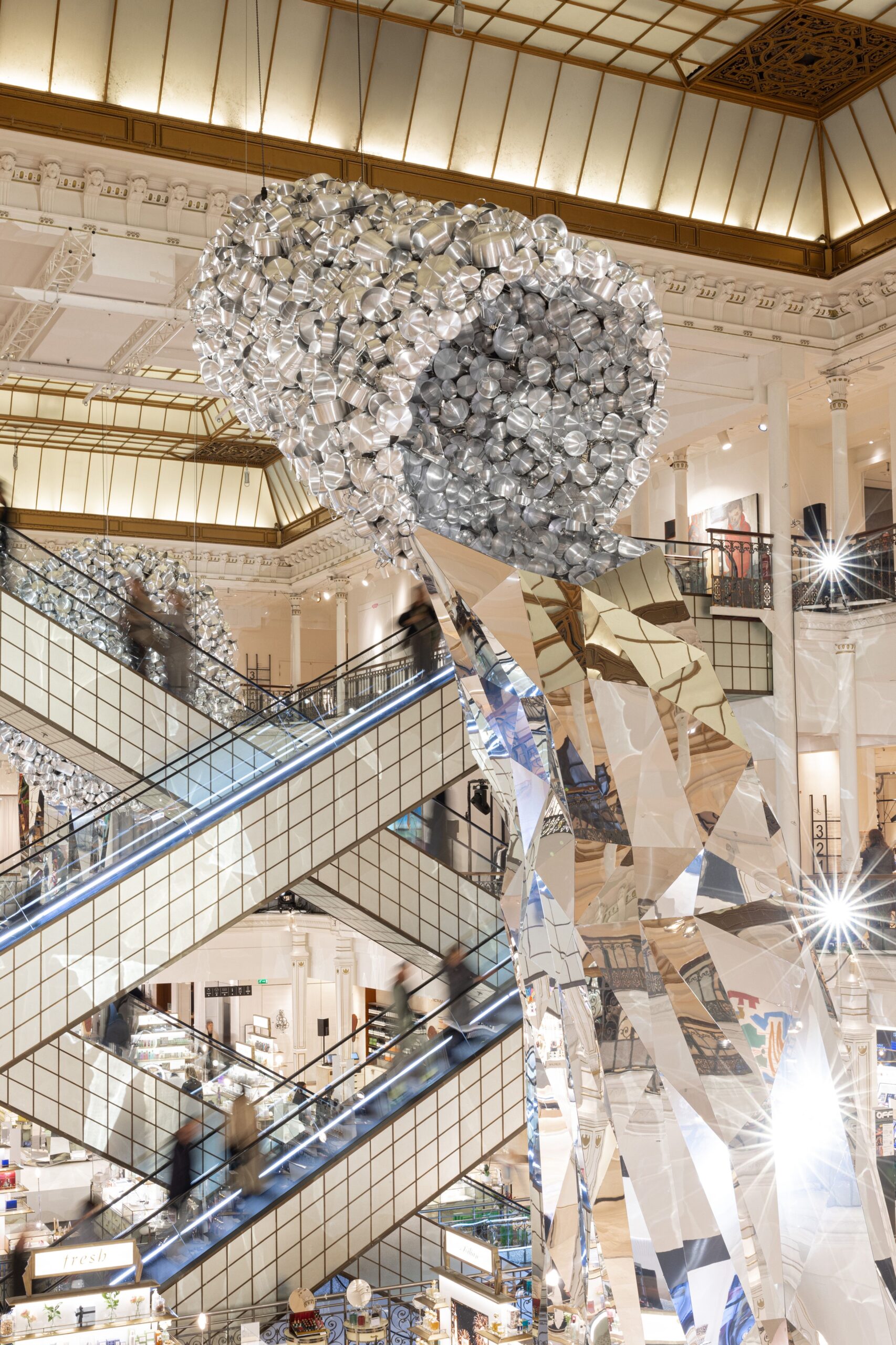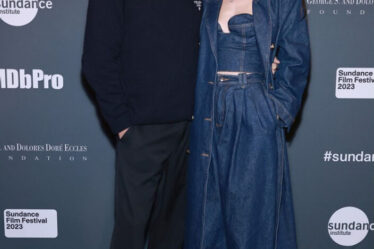
Neri Karra walked into a Macy’s in Washington, DC, last month and was surprised at just how different it was from the department stores in her native Paris.
“Things were on top of one another — everything all at once and no curation,” said Karra, a brand consultant and professor of entrepreneurship strategy at Oxford University.
She had been visiting family in the American capital and wanted to shop for the holidays. The single-brand Georgetown boutiques were great, she said. But the big-box retailers? Not so much.
Karra isn’t alone in her conviction that American department stores lack the je ne sais quoi of their European counterparts. Consumers, industry veterans and even brands agree that the shopping experience in stores like Selfridges in London or LVMH’s Le Bon Marché and La Samaritaine in Paris are unmatched.
To be sure, the department store format has been losing ground everywhere. The rise of e-commerce eroded the convenience factor of department stores, while the pandemic was another catastrophic blow. In the US, the market size of department stores as defined by retail value has shrunk by more than 40 percent between 2016 and 2021, according to Euromonitor. In Europe, that decline is more tempered. Over the same period, department stores’ sales diminished by 27 percent in Western Europe and 12.5 percent in Eastern Europe.
As the world reopened from the pandemic, nonetheless, physical stores enjoyed a renaissance. While opening single-brand boutiques has been the focus for many players, consumer appetite for multi-brand spaces that can serve customers with novelty, discovery and immersive experiences is also growing.
“Competition in the fashion landscape is getting more intense…So the physical [experience] is a point of differentiation, both a challenge and an opportunity,” said Peter Baldaszti, founder and chief executive of Vanguards Group, the Budapest-based portfolio company that owns contemporary brands Nanushka, Aeron and Sunnei.
For American department stores, the push to better compete with single-brand retail and e-commerce often involves taking cues from their European counterparts, seen as leading the pack in everything from assortment and restaurant concepts down to displays and lighting. Many have already made major improvements in recent years: Saks Fifth Avenue spent millions renovating its New York City flagship and Neiman Marcus said it’s currently making significant investments for store concepts.
It’s not a completely fair comparison: European multi-brand chains are often anchored in tourist capitals, where visitors from Asia, the Middle East and increasingly the US stock up on tax-free luxury merchandise. They also have a stronger heritage in the space — Le Bon Marché was the world’s very first department store when it opened in 1852 — as well as consumers who are less discount-driven than in the US.
The rise of the travelling luxury shopper created a virtuous cycle of higher investment in Europe’s iconic emporiums — at the same time that a vicious cycle of rampant discounting and lack of cash flow sped American multi-brand players’ decline.
European department stores are also mostly privately owned, with ultra-wealthy owners who have been able to keep up investment during downturns in a way publicly traded US players could not.
“It becomes difficult to improve when things are so revenue-driven,” said retail consultant Robert Burke, a former executive at Bergdorf Goodman. “The tendency in the US is to be transactional, which doesn’t give a lot of freedom of opportunity.”
Differentiating Through Design
A fundamental difference between American department stores and those in Europe is store design, from the layout of the space to the materials used for floors and displays to finishing touches like light fixtures and the pictures on the walls.
Given the bottom line-focused mentality of American big-box chains, their approach toward how stores look and feel tends to be very “systematic,” said George Yabu, who founded design firm Yabu Pushelberg alongside partner Glenn Pushelberg.
Whereas American corporations would insist on meeting specific criteria, like racks with multiple hanging capabilities, “you never get criteria in store planning at La Samaritaine, for example,” Yabu said. “[Just] make an exalted temple of desire, responsibly.”
As a result, the European stores exude a more creative and inviting atmosphere for consumers. Rather than vast, open layouts, they are partitioned into rooms or shop-in-shops with varying styles, contrasting open spaces and high ceilings with little corridors where shoppers can stumble upon things and explore. Variation is key: differences in lighting, openness of space, store furniture and the art that adorn the walls.
Inside the memorable Tudor-style Liberty in London, for instance, three large atriums are flanked by numerous smaller rooms, and each room is designed to be distinct with details like vintage furniture instead of standardised decor. Liberty also merchandises each room not by category or brand but by different tones of style.
“We’ve turned the clock tower into an intimate brow bar, we’ve built a gallery-esque accessories department in the centre of the store to give centre stage to our architecture and have peppered interesting pop-ups throughout the store,” Liberty’s managing director of retail, Sarah Coonan, told BoF in an emailed statement. “One of the ways we operate differently is starting from the creative idea rather than the commercial objectives.”
Transforming lacklustre interiors into something a bit more special isn’t always a heavy lift. Even small changes can go a long way, such as reducing the number of garments on each clothing rack or varying the lighting, said Glenn Pushelberg. Lights at different heights in different temperatures, for instance, can inspire different emotions in the shopper. Product displays and tables can be recycled materials or even found objects. And retailers can’t forget about fitting rooms and bathrooms, which can make or break the overall experience, Pushelberg added.
Upgrading little details adds to the air of luxury and therefore can augment the value of the products they display, too.
“We used to joke that with good lighting and good mirrors, you can sell anything,” said Burke.
The Shift to Concessions
American department stores are increasingly invoking the European model where they can. Luxury brands like Chanel, for instance, have pushed their American wholesale partners to embrace the concessions model, the common way of operating multi-brand retail in Europe.
Under a concessions model, trusted brands manage their own products and in-store experience within department stores, which take a cut of each sale rather than buying the inventory wholesale.
For the likes of Neiman Marcus, mixing wholesale and concessions means giving up some control over selection and service. But housing retail locations for anchor names like Louis Vuitton (which snubs wholesale completely) or Nike is a powerful draw for foot traffic, and often more profitable than holding inventory and operating the space themselves.
For customers, the brand-operated shop-in-shop is often a more engaging experience, with brand-employed sales associates who are experts on the products.
“Concessions actually makes a huge difference,” said Karra. “It means it’s the brand’s own people serving the customers in the department stores, representing the brand the way they want to.”
Commitment to the Experience
“Experiential” may be the ultimate buzzword in retail, but a truly immersive, delightful shopping experience is still somewhat of a rarity.
In recent years, certain American department stores have seriously invested in amping up their experiential components. Shortly after renovating its beauty floor, Saks Fifth Avenue in Manhattan opened the only American outpost of popular Parisian bistro L’Avenue in 2019. In 2018, Bloomingdale’s launched a rotating pop-up series in four of its stores; every two months the space is repurposed based on a new theme.
Those moves recall London’s Selfridges strategy of reserving some of its most coveted, visible corner spaces for brand takeovers and art installations rather than merchandise or a blue-chip shop-in-shop tenant.
Some of these efforts have been effective. But by and large, they don’t compare to the frequent and large-scale activations put on by the likes of Le Bon Marché, Selfridges, Harrods and others in Europe. The Selfridges on Oxford Street alone offers more than 20 food and beverage options, some of which are sprinkled throughout the sales floor. Last fall, to celebrate its 170th-year anniversary, Le Bon Marché put on a two-hour play inspired by New York’s Sleep No More production inside its store every Friday and Saturday — a run that will pick up again this spring.
The goal, Le Bon Marché told BoF, is to provide customer experiences that evoke an emotional response. By always offering new and unpredictable activations and pop-ups, European department stores ensure that local customers will keep coming back.
It’s not that special events and installations are absent from American department stores: Nordstrom has hosted numerous “pop-ins” and collaborations under its creative projects division headed by Opening Ceremony alum Olivia Kim.
The missing piece of the puzzle is the cumulative effect of a multitude of products, experiences and services that helps reach different customers and create the consummate shopping experience. Initiatives often work best when executed with the aim of surprising and delighting the customer — creating a connection or exceeding their expectations — rather than simply making a sale.
“Fashion at the end of the day is about fantasy, about selling you a dream,” said Karra.



